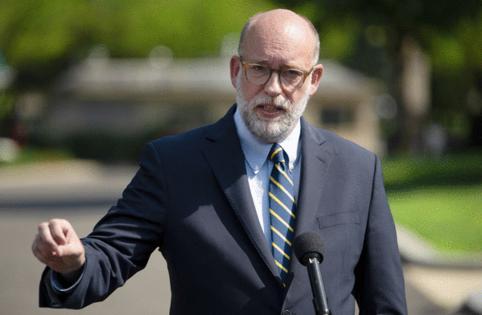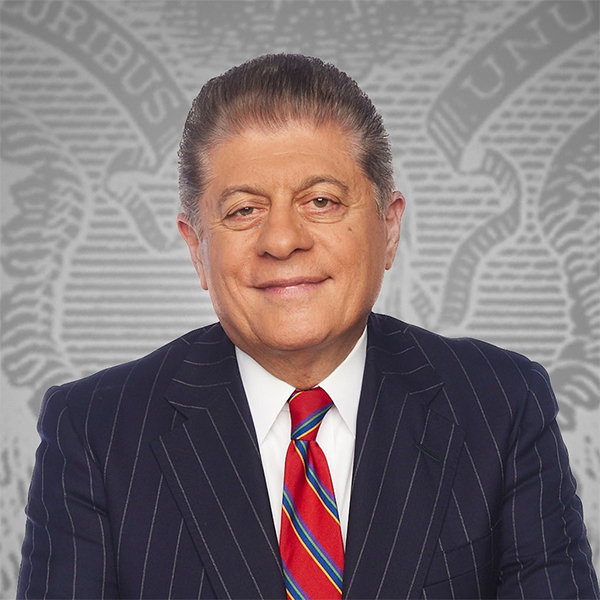Shutdown pain may not be evenly spread as OMB readies hatchet
Published in Political News
WASHINGTON — Office of Management and Budget Director Russ Vought’s new partial government shutdown guidance implies the executive branch will use a hatchet in some areas and go easy elsewhere — with Democratic priorities likely first on the chopping block.
A February memo to agencies from Vought and the Office of Personnel Management on how to plan mass layoffs said the process would be based on past shutdown procedures as a “starting point.”
That previous guidance said reductions-in-force, or RIFs, wouldn’t affect military and other uniformed personnel or positions “necessary to meet law enforcement, border security, national security, immigration enforcement, or public safety responsibilities.”
It also exempted “agencies or components that provide direct services to citizens,” naming Social Security, Medicare and veterans health care as examples, unless it’s determined that RIFs in those areas “will have a positive effect on the delivery of such services.”
The president tipped off his potential shutdown strategy on Sept. 19, the day competing partisan stopgap funding bills were rejected in the Senate.
“I think you could very well end up with a . . . closed country for a period of time. And we’ll take care of the military. We’ll take care of Social Security. We’ll take care of the things that we have to take care of,” Trump said. “A lot of the things that Democrats fight for, which in many cases aren’t very good, things will not be able to be paid.”
In addition to cuts, the Trump administration has also demonstrated a capacity for keeping certain programs going in a way that bends, or even breaks, the Civil War-era law that prevents the executive branch from spending money it doesn’t have appropriations for.
During the 2018-2019 shutdown, the longest in history at 35 days, the Government Accountability Office found multiple Antideficiency Act violations by the first Trump administration.
In one case, the Interior Department tapped a deferred maintenance account for longer-term projects to fund trash collection and restroom sanitation at national parks that were kept open. In another, the Agriculture Department made a round of Supplemental Nutrition Assistance Program payments that were not authorized given the funding lapse.
Trump’s comment about not paying for “the things that Democrats fight for” raises more far-reaching questions about how a new shutdown would be implemented.
As Sen. Roger Marshall, R-Kan., told reporters this week: “I’d be much more worried if I were a blue state.”
It’s not quite that simple, as federal employees are fairly evenly dispersed around the country.
At least before the mass layoffs and deferred resignations that the second Trump administration rolled out earlier this year, about 55% were located in Democratic-leaning states and the District of Columbia, with the remainder in red-tinged states.
“Instead of sitting down with Democrats to prevent a shutdown and protect Americans’ health care, President Trump is threatening to inflict more pain on the American people — in red and blue states alike,” Senate Appropriations ranking member Patty Murray, D-Wash., said in a statement.
About 874,000 federal workers were located in GOP-leaning states in 2024, according to Office of Personnel Management data compiled by the Congressional Research Service. That included nearly 18,000 in Marshall’s home state of Kansas, which ranked 33rd among the states for total federal civilian employees.
Programs targeted for elimination in Vought’s latest memo include those without statutory authorization or mandatory appropriations, and that don’t necessarily fit in with Trump’s vision of an essential priority.
There’s $500 billion provided in fiscal 2025 for programs whose authorized appropriations have expired, according to the Congressional Budget Office, including $168 billion in the jurisdiction of the Labor-HHS-Education appropriations subcommittees.
The Department of Health and Human Services, has a regional office for its Administration for Children and Families in Kansas City, Missouri, just minutes away from Kansas, which is among the four states served by that office.
Expired ACF programs include low-income heating and cooling assistance, preschool development grants and community services block grants, all of which Trump’s fiscal 2026 budget proposed to eliminate and could be targeted under Vought’s shutdown guidance.
In all, CQ Roll Call found that among the top 25 states for federal workers, 14 of them lean Republican according to Inside Elections’ Baseline metric, which combines all federal and state election results over the past four election cycles into a single score.
Still, about 22% of federal employees were located in just three Democratic-leaning states — California, Virginia and Maryland, with D.C. accounting for another 8%. While federal workers made up about 1% of Kansas’ adult workforce, that figure jumps to around 4% in blue-state bastions Maryland and Hawaii.
Sam Berger of the left-leaning Center on Budget and Policy Priorities acknowledged that the Trump administration “could absolutely take a different approach than they took last time and stop more programs during a shutdown.”
But Berger, a former Biden administration budget official, said eventually federal employees who were laid off or working without pay will run out of patience, forcing a deal to reopen the government.
“You can’t use IOU’s to pay your grocery bills, to pay your mortgage,” he said. “That is why there’s always a time limit on how long a shutdown can continue.”
(Peter Cohn contributed to this report.)
©2025 CQ-Roll Call, Inc., All Rights Reserved. Visit cqrollcall.com. Distributed by Tribune Content Agency, LLC.
























































Comments